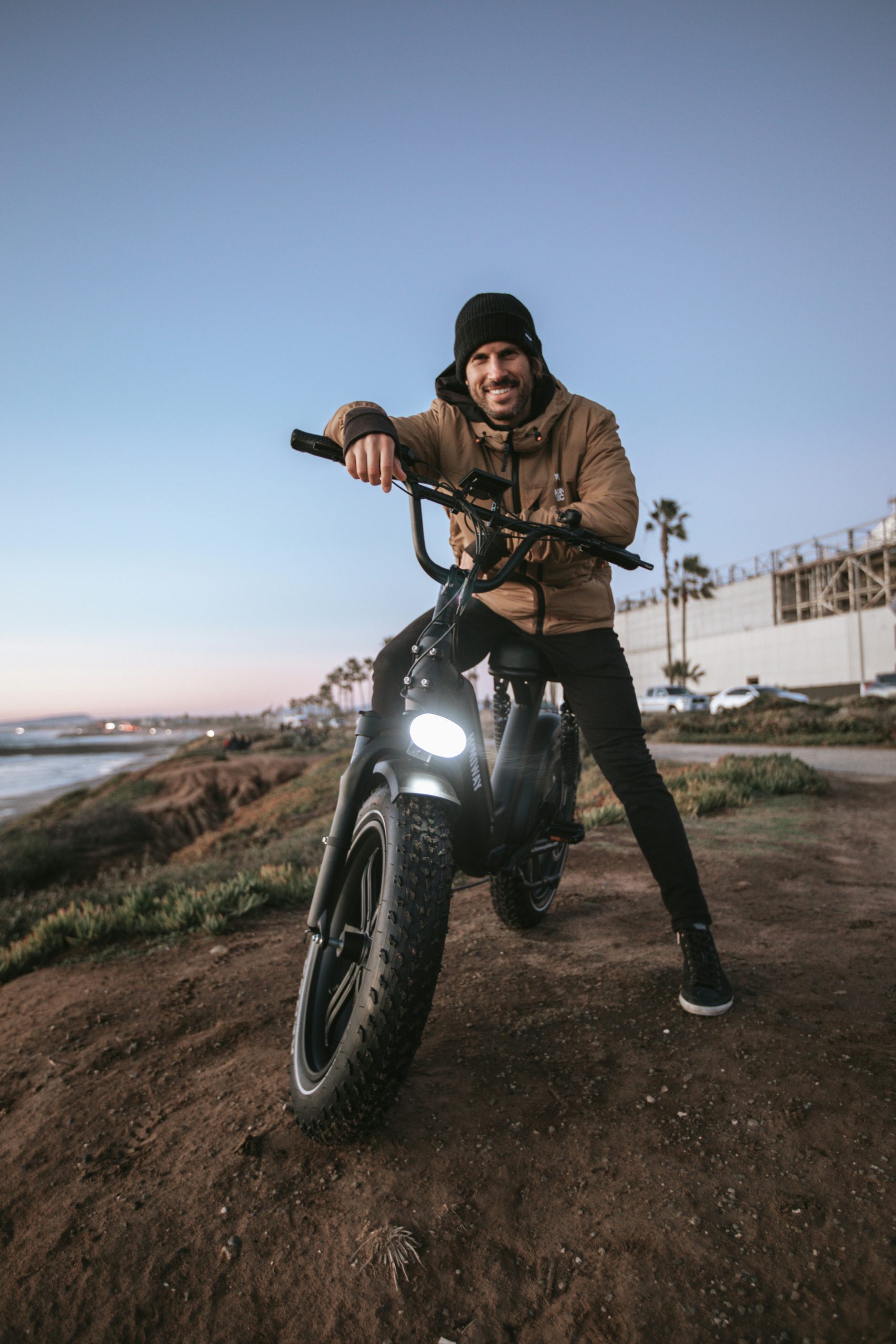A few decades back, the electric starter didn’t exist. ICE engines had to be kickstarted. A badly timed kick separated the men from the boys pretty fast. Motorcycling was for serious men, and the Kickstarter was the line drawn with fire.
They took that away with the electric starter.
For motorcyclists, riding a conventional, old-fashioned motorcycle is like an immaculately choreographed ballet synchronising the throttle, clutch, shift, and brakes. Get one wrong and you will crash the motorcycle. Or worse, stall it.
After the Kickstarter was gone, the gearbox remained, and most adolescents would drop the clutch, silly and stall the engine. The men would smirk.
The brands didn’t like that. They needed the boys. And the girls. The men were default. The brands had to dumb down make motorcycles easier to reach a wider audience.
So they did – electric starters, automatic clutches, and even automatic gearboxes; they took away anything that appeared complex to the wannabes. In doing so, they did not realise that they had been moving mankind towards electric motorcycles all along.
In a way, today’s post is the antithesis of what we wrote about a few weeks back, how lifestyle motorcycle brands have an uphill challenge in electrification.
Maybe they don’t have a challenge? At least not in the way we said.
What if we said that lifestyle motorcycle brands face an uphill battle to stay relevant? Electrification is just one part of their woes. More than that, the quest to attract softer riders (including females) would force brands to soften their products.
Would it work? We don’t know. We are merely opinionated, not experts.
At a broad level, in the lifestyle segment, what differentiates ICE and EVs is their ease of operation. EVs are twist-and-go, while ICE motorcycles, thanks to the clutch and gearbox, have more theatrics.
Hunters & Gatherers and the Continuous Dumbing Down
Prehistoric humans were hunters and gatherers. They dwelled in caves, lit fires to stay warm and endured the elements. They fought bears, hunted with spears and fought their way through evolution to arrive where we are today. Arguably, they had greater vision and a heightened sense of smell, as those were the only things keeping them alive.
We are the dumbed-down evolution of Neanderthals. We cannot see or smell that well. Take us out of our heated homes, and we would wither and die. If we ever faced a Neanderthal in a neighbourhood brawl, they would embarrass us silly.
Now motorcycles. The heritage-lifestyle brands owe their growth and recognition to World War 2. After that, the world was flooded with motorcycles. All metal, all good-looking, all requiring a certain manliness to ride. They had kick starts, carburettors that often needed tinkering many times a day, engines that needed coaxing and transmissions that were clunky and confusing. They broke down a lot, so you were not a rider unless you were also a grease monkey.
Motorcyclists loved them. Life was fun. Society had drawn a high barrier between humans and motorcyclists. The latter were the cool guys.
Then, some people started demanding that they be motorcyclists without being grease-heads. Motorcycle companies complied by making more dependable motorcycles. Over the years, there has been a constant demand to make motorcycles ‘easier’ and more accessible, and as a response, machines have been dumbed down.
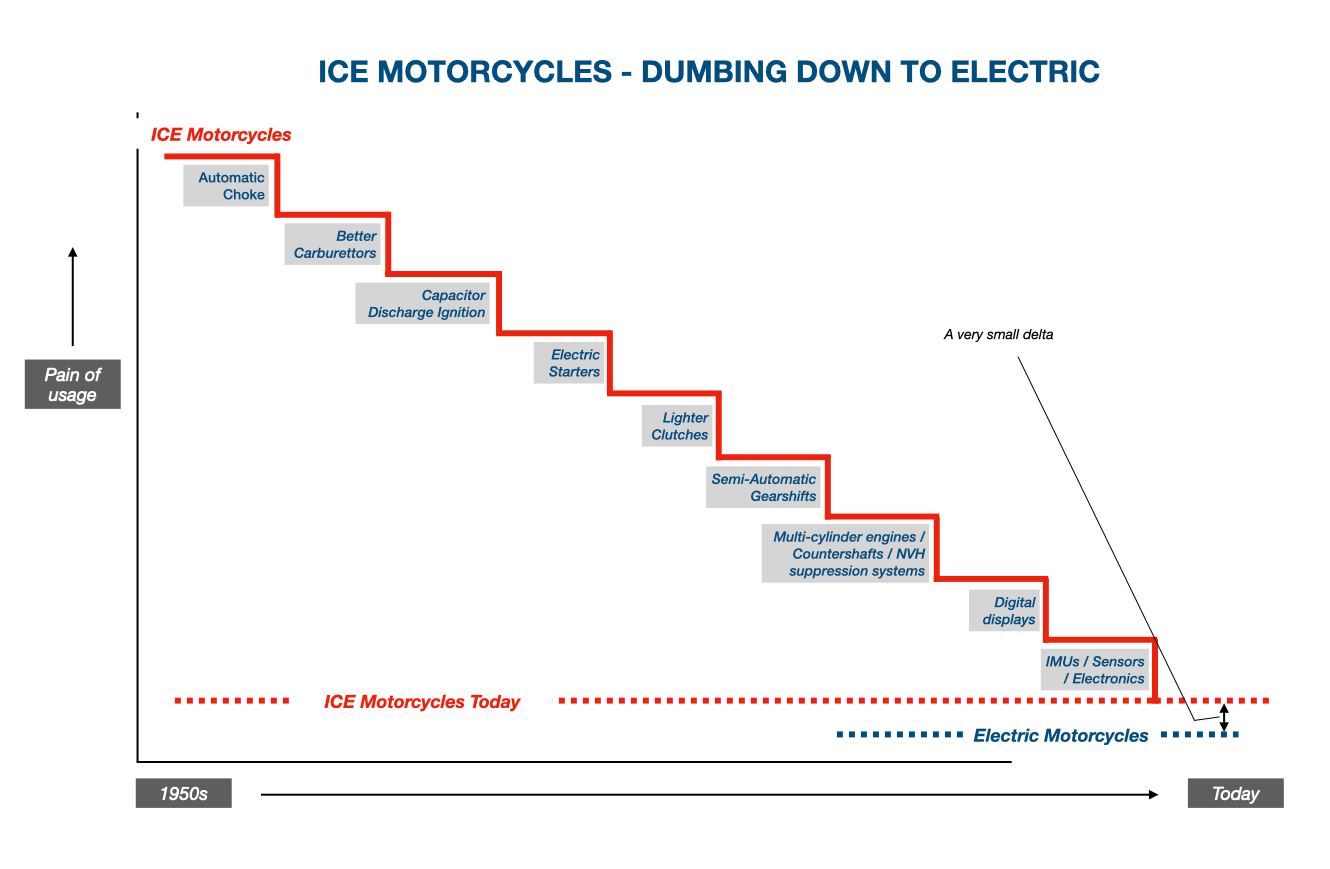
It’s a strange situation where the ICE industry has continuously and consciously made the motorcycle experience automatic and easier. At the same time, the electric motorcycle industry—the handful of them—has been trying to make its user experience as complex as the ICE machines provide. So we have Harley-Davidson/Livewire experimenting with fake brakes and a simulated clutch while Kymco is faking an entire gearbox. Meanwhile, Zero is also conscious of a missing experience piece and has been working on a fake clutch.
But that’s something we will discuss another day. Let’s return to the ICE world and examine the major lifestyle brands’ performance.
How are the Motorcycle brands doing?
Here, let’s take a step back and let’s look at how lifestyle brands have been doing in the recent past (all data from MotorcyclesData)
- BMW Motorrad sold 208,528 units in 2023, up by 3.4 percent. Incidentally, this was BMW’s 14th record year in a row.
- Ducati sales were flat at just shy of 59,789 units from 2023 levels
- Triumph is a beacon of inspiration, with 2023 sales at 98k units, 18.7 per cent higher than the previous year. This may increase in 2024 as the brand starts rolling out the 400cc and 250cc motorcycles from its Indian venture.
- Across the pond, Harley-Davidson had another sorry year, with sales down by 5 percent from 2023, at 168k levels. H-D sales are now half of what they were about a decade back.
- The other American cruiser manufacturer – Indian, had a bad year too, with sales declining to 30,000 units, down about 3.0-percent.
- Aprilia sales were down by 5.6 percent to 65,464 units in 2023. Remember that Aprilia also sells a range of commuter scooters in Europe and India, so the overall lifestyle volumes are rather dismal.
- RE, the biggest lifestyle motorcycle brand in the world – if lifestyle starts at less than USD 3k – had a record year again as global sales hit 920k, a 16.2-percent jump.
Honestly, the record is mixed, with some brands doing well and others not. Some lifestyle brands like BMW, Triumph, and RE have all had their best years recently. Others like H-D and Indian are in trouble, mostly because the limited geographies they are relevant in have seen a change in rider tastes.
This change in rider tastes is important. It’s a killer.
It’s the killer
In our collective minds, we continue to revisit EICMA 2022 and 2023, when we visited the lifestyle motorcycle brands RE, Ducati, and Triumph. We saw a sea of white—most visitors were not young. Most anecdotal evidence and the data that the brands put out indicate that the buyers are not young, especially for non-Japanese brands.
Here is a Triumph Motorcycles forum for buyers discussing the median age of buyers. They put it in the late 40s and even early and mid-50s.
Ducatis need an involved rider, so the riders are comparatively younger. This informal poll on a UK Ducati forum suggests that the median buyer is 46 years old. Here is a Diavel forum pegging the median age as likely between 46-55 years.
Then there is this discussion forum of Indian motorcycles, together realising that the median age of a Scout owner is around 57 years.
The decline of H-D started in the 2010s, and this study shows that right about that time, the median age of motorcycle buyers here in America had increased by 10 years to nearly 50.
If BMW Motorrad has had 14 record years in a row, it may be because they have worked hard to attract younger buyers.
You get the point – while the average Instagrammer shooting reels on a superbike appears in his mid-20s, the eventual buyers are at least two decades older.
It makes sense – lifestyle motorcycles are expensive. In the US, a Diavel V4 starts at USD 22k, a Multistrada V4 for USD 32k, and a Panigale V4 starts at USD 25k. These are the top-end lifestyle motorcycles, and while more accessible Ducatis are available for about USD 10k (Scrambler Icon), they are not the ‘Red bikes’. Within the Ducati universe, they are the motorcycles the accountants forced you to do.
The same is true with Triumph US—the entry-level motorcycle (the 400 is a baby) is the Trident 660, which retails at USD 8.5k. Everything else is much higher, and the triple-cylinder Tigers only start at USD 22k.
These big-ticket purchases require hardcore determination from any enthusiast to splurge on something that will serve them well only half the year and spend the other half parked in a secure garage. Also, the license to ride one of these is a costly and time-consuming affair that tests the commitment levels of wannabe bikers.
What that means is that while superbikes may be a teenage fetish, they are a middle-age indulgence.
In that sense, lifestyle motorcycle buyers and supercar buyers are similar. Both have money and taste in life and want to be seen.
The average Ferrari buyer is 51 years old, the youngest they have ever been! Ferrari does not like that and has been working hard to attract younger buyers. Last year, Ferrari CEO Benedetto Vigna told CNBC that one-third of their buyers are now under 40.
Fast cars and Fast Motorcycles – The Similarities end here.
But the similarities end there. Fast motorcycles also need one more aspect, apart from money—reflexes. Of the rider.
A fast motorcycle is demanding in nature. The sharp handling, sheer power, and mass mean that the rider needs to have a certain physical conditioning to harness their potential. Sports motorcycles, especially, are known for hard suspensions, which are not great for middle-aged spines. What that means is from the time lifestyle bikers can afford a motorcycle to when they are still fit to ride one, it is a matter of a few years.
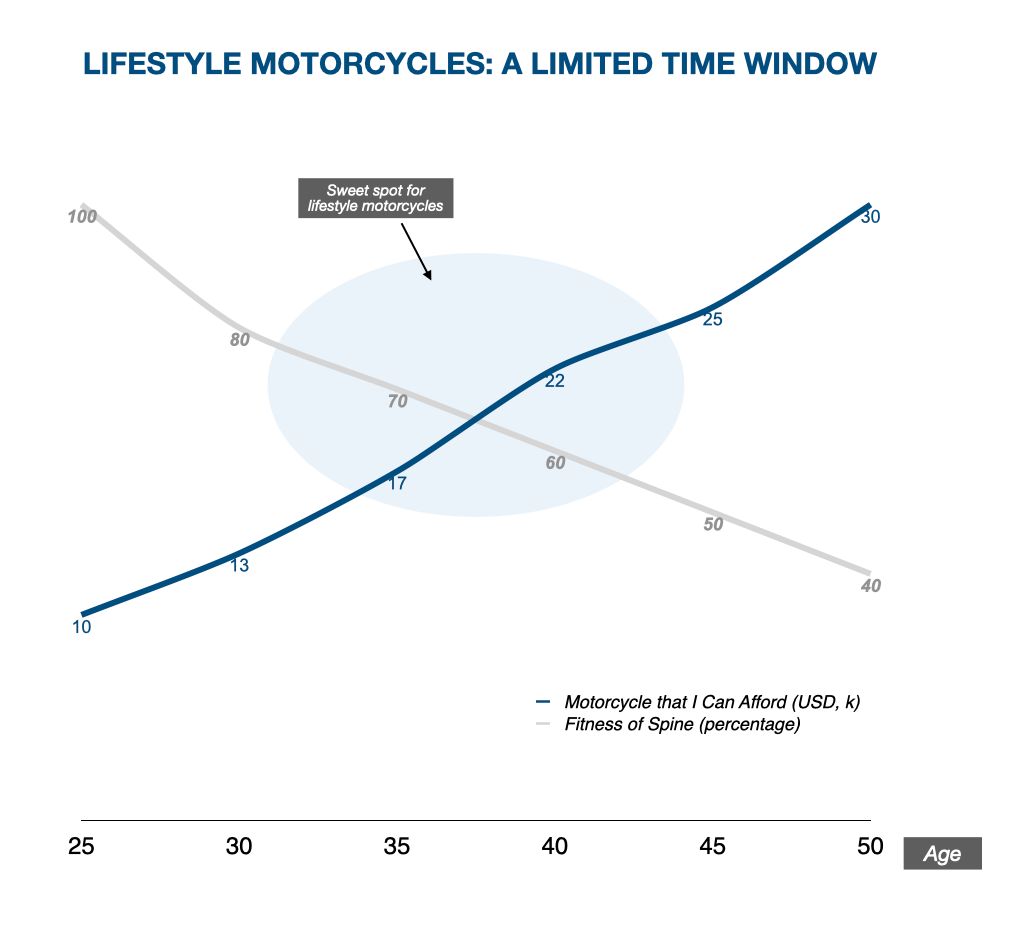
That’s a small time window for lifestyle brands to target potential customers.
Over the last two decades, more motorcyclists have migrated to middleweight motorcycles, deserting the full-size segments. The lifestyle-middleweight is becoming popular because it is comparatively slower; riders can live with slower reflexes, yet motorcycles provide the thrill and freedom that riders crave.
This has been a window of opportunity for brands like Royal Enfield and is why everyone from Ducati to Norton and Triumph to BMW is working on smaller-capacity, more affordable machines.
Changes in tastes: Men go soft…
Passion, both for and from the brand, builds lifestyle motorcycle brands. A ‘fire’ for motorcycling keeps the collective Lifestyle Motorcycle industry alive. Over the years, leisure motorcycling has been associated with many emotions—freedom, life, passion, character, discovery, etc. Many a time, and in many cultures, motorcycling is considered synonymous with masculinity, something that has driven H-D especially.
However, the world is ‘softening’, and the male of the species is now more expressive, often choosing softness over blunt manliness. This tsunami of wokishness inclusiveness that has flooded the world impacts the buying choices of males. While powerlifting, woodworking, motorcycling and iron-mongering may be some of the last bastions that stay standing, they have been dented.
This change in tastes is apparent throughout the automotive horizon—today, a stick shift is rare in modern cars. Electric machines don’t need a clutch; even ICE cars now treat the clutch as a vestigial organ.
One of the biggest obstacles to attracting new blood to motorcycling is the complexity they associate with manual shifting. Keeping the revs right, the clutch action quick, and choosing the right gear may be easy for motorcyclists to do even in their sleep.
Hardcore motorcyclists take pride in mastering this art. But this is a complex science for a new entrant. Many give up even before properly starting.
Stalling a motorcycle in the wrong gear is an embarrassment that no biker should be put through, especially when they are taking off from their neighborhood biker bar’s parking lot.
…Machines go hard
Meanwhile, the cut-throat competition between lifestyle brands ensures that motorcycles get sharper each year. They are more powerful, quicker, and faster, improving their power-to-weight regularly to become nimbler. Just for fun, here is how the Honda Fireblade has progressed over the years:
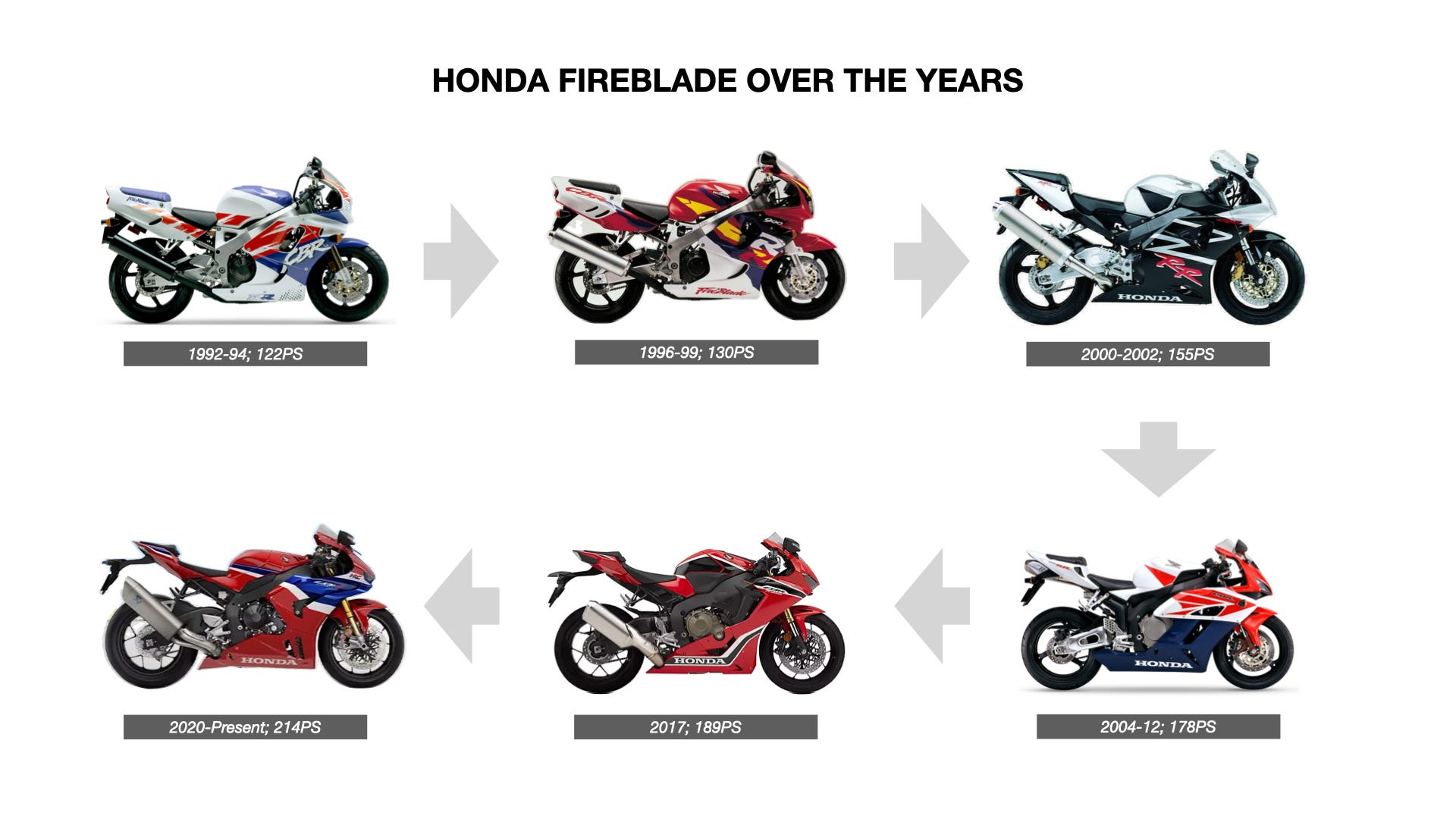
While the Fireblade is a litre-class supersport – the cutting edge of motorcycle engineering – the other classes haven’t stayed too far behind. Engine capacities go up every year, and so does the power. The BMW R 1100 GS of 1999 churned out 80 PS. Its present-day evolution – the R1300 GS is 145 PS, a bump of 81-percent over 25 years. Ditto for the Dukes, the Zs, the CBs and any other motorcycle line-up – cut-throat competition vying for the same very small pool of customers means that performance has to be bumped up every year.
The problem is that human bodies don’t get a bump up every year. Average 48-year old dads don’t bulk up or develop sharper reflexes every year. In all probability, they deteriorate.
We are in an equation where the two sides started in a balanced state many years ago but have been pulling away from each other since. Today, it has reached a point where lifestyle motorcycles are pure scary.
If someone named their motorcycle Widowmaker, no one would bat an eyelid. Actually, the original Kawasaki H2 was nicknamed such and it is reverred.
This is bad for brands as it either drives your wafer-thin customer base away or (worse) kills them.
It is a one-way street, as no brand would wink first. Honda won’t lower outputs as Ducati won’t, and then Kawasaki won’t oblige. And when all of the major brands agree, as the Japanese did with their gentlemen’s agreement, there would always be the mad Italians, some outlier who would decide to break it.
So, power won’t go down, speeds won’t decrease, motorcycles will get quicker, and lifestyle motorcycling will become increasingly challenging.
But wasn’t motorcycling all about fun?
Tech: Saving the day
The savior in the story is electronics. Today’s modern motorcycles have more electronics than Apollo 11. Most of these electronics focus on keeping both wheels on the ground and making sure you stop in a straight line. ABS—various grades, traction control, wheelie controls, and many more ‘controls’ are now easily available on high-end motorcycles. Considering these techs are a mix of sensors and software at the core, we expect a rapid percolation to mass-market machines.
However, a considerable share of new tech is focused on making motorcycling easier and more accessible. Gearshifting is a high barrier to entry for new motorcyclists, and I feel lifestyle brands and tech need to solve that. The clutch+manual transmission has been one of the highest barriers to entry for new motorcyclists to take up the passion. Lifestyle motorcycling brands reckon more customers may be attracted if this part of the equation can be simplified. In recent years, manufacturers have tried to get their manual transmissions as close as possible to automatics in feel.
If you get a sense of deja vu, the same happened with automobiles some time back.
The first step was the quickshifter. Realising that gearshifts have to be quick for fast acceleration and operating the clutch is a rather time-consuming operation, manufacturers designed the quickshifter. This is now found in most performance-oriented motorcycles and allows for shifting gears without operating the clutch. It’s a great feature for new and seasoned motorcyclists, allowing the rider to shift faster.
Honda leads Woke Motorcycling.
At EICMA 2023, Honda launched the E-Clutch technology, further developing the quick-shifter. The E-Clutch allows the rider to shift with or without using the clutch. Compared to the quickshifter, it is more refined. In Honda’s own words:
The Honda E-Clutch takes elements of the technology and performance of quickshifters, manually-operated clutches and Honda’s unique Dual Clutch Transmission technology to create a unique blend of these well-proven approaches. During the gear change, it uses a harmonised combination of ‘half-clutch’ operation, fuel injection cut and ignition control to eliminate ‘shift shock’ for an ultra-smooth ride.
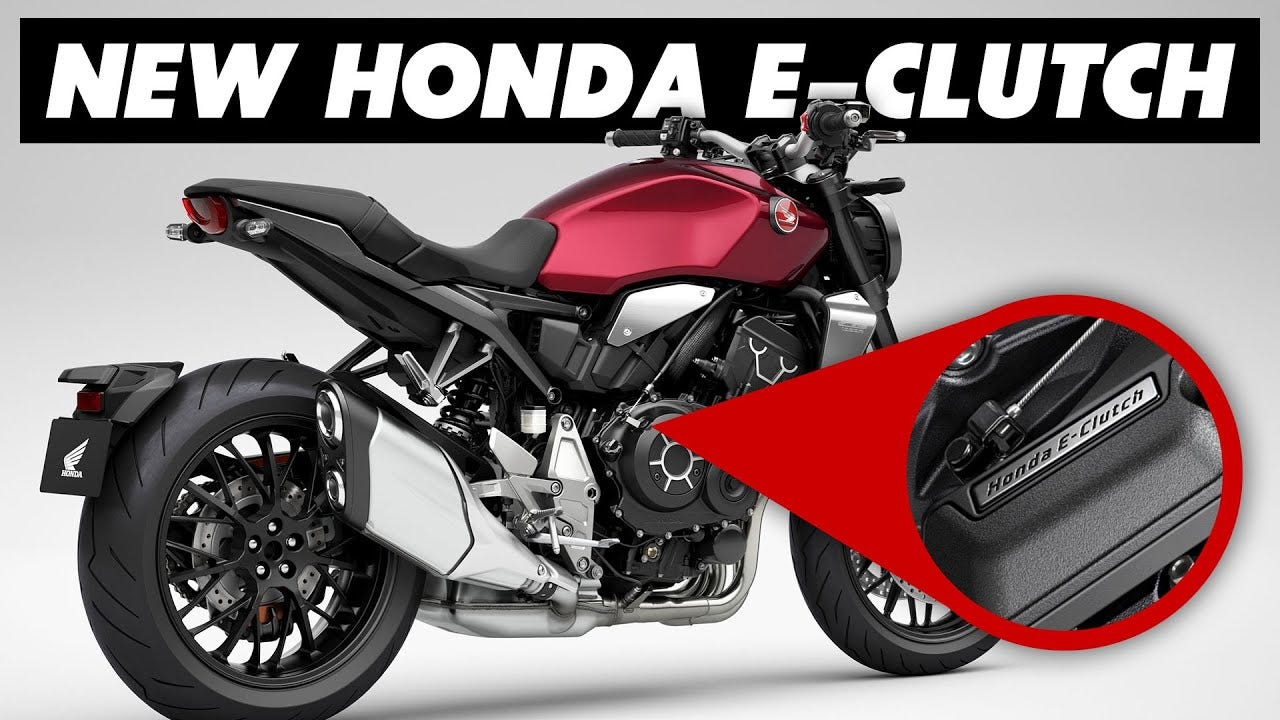
Honda has always believed in deliberately ‘softening’ even the most aggressive motorcycles to make them more accessible. This has worked for the brand as Honda sells more big motorcycles than any other.
Even before the E-Clutch came into the picture, Honda’s large motorcycles, like the Goldwing and the Africa Twin, came with an optional DCT transmission. A missing clutch lever on a 1833cc six-cylinder motorcycle was the equivalent of painting the motorcycle in rainbow colours.
No one objected, maybe because the median Goldwing buyer is a 57-year-old and was thankful that the clutch lever was taken away.
Honda is not alone. We see the same attempts to make motorcycles ‘soft’ everywhere. One can imagine marketing teams making presentations at various lifestyle motorcycling brands, all talking about how we exclude half the population (females) from lifestyle motorcycling by not making motorcycles inclusive enough. Even when the discussion is not about inclusivity, it veers towards making motorcycling ‘fun’ and ‘easier’.
Why else would a hardcore brand like KTM put an automatic transmission on its flagship ADV touring motorcycle? That seems to be happening now with the Super Adventure 1390, which should be available to retail by 2025. Unlike the Honda DCT or E-Clutch, the KTM design seems more sophisticated.
Cycle World reported KTM’s new patent filings for the transmission, in which the publication noted:
The electronics of the transmission allow it to operate in either fully auto or semi-automatic modes, and unlike designs from BMW and Honda, the patent says it uses a centrifugal clutch to connect the engine and the gearbox. That gives twist-and-go control, like a scooter, and removes the need for an additional clutch actuator and its associated electronics.
If KTM plans to go automatic in 2025 for arguably its flagship motorcycle, BMW is doing the same. In 2025, the 1300 GS would get a semi-automatic transmission. The Motorrad division calls it the BMW Automated Shift Assistant, and it uses two electromechanical actuators to automate clutch control and shifting of a conventional six-speed transmission.
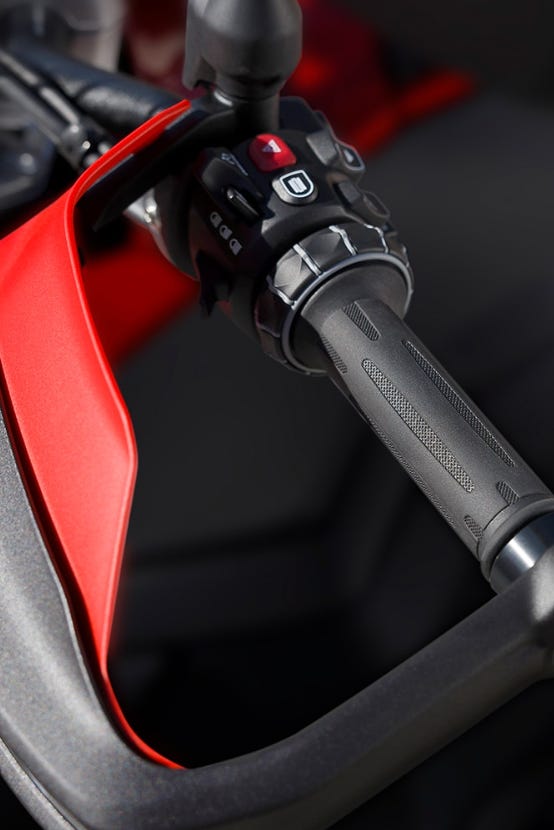
BMW Motorrad says that the new system:
Allows a greater focus on the riding experience with its fast, rev speed- and load-based gear changes.
Like most automobiles with automatic transmissions, BMW provides M & D modes. The ‘M’ mode is for experienced riders who know what they are doing and at what rpm they should change gears. The ‘D’ mode is a pure twist-and-go mode, completely taking over the shifting duties, making the R 1300GS acceptable to everyone.
It’s not that automatic transmission in motorcycles has not been tried earlier. In 2007, Aprilia put a CVT gearbox in the Mana, dumbing it down to the scooter level. Yamaha had put a semi-automatic in the FJR 1300 sports tourer a year before.
Even hallowed brands like MV Agusta have been in the game with their Smart-Clutch-System (SCS), similar in feel to the Honda E-Clutch. The system, available on the Dragster and Tourismo Veloce models, automates the clutch operation.
Hardcore Motorcycles are passe.
With automatic transmissions easing the way in ICE, motorcycles are becoming easier to ride. This bridges the gap between ICE and EV and is a favorable direction for the E2W industry.
So when, a few weeks back, we said that E2Ws are not just up to the mark in lifestyle motorcycles in an ICE world, we needn’t have worried. ICE has been busy dumbing down motorcyclists to bring them up to EV levels.


